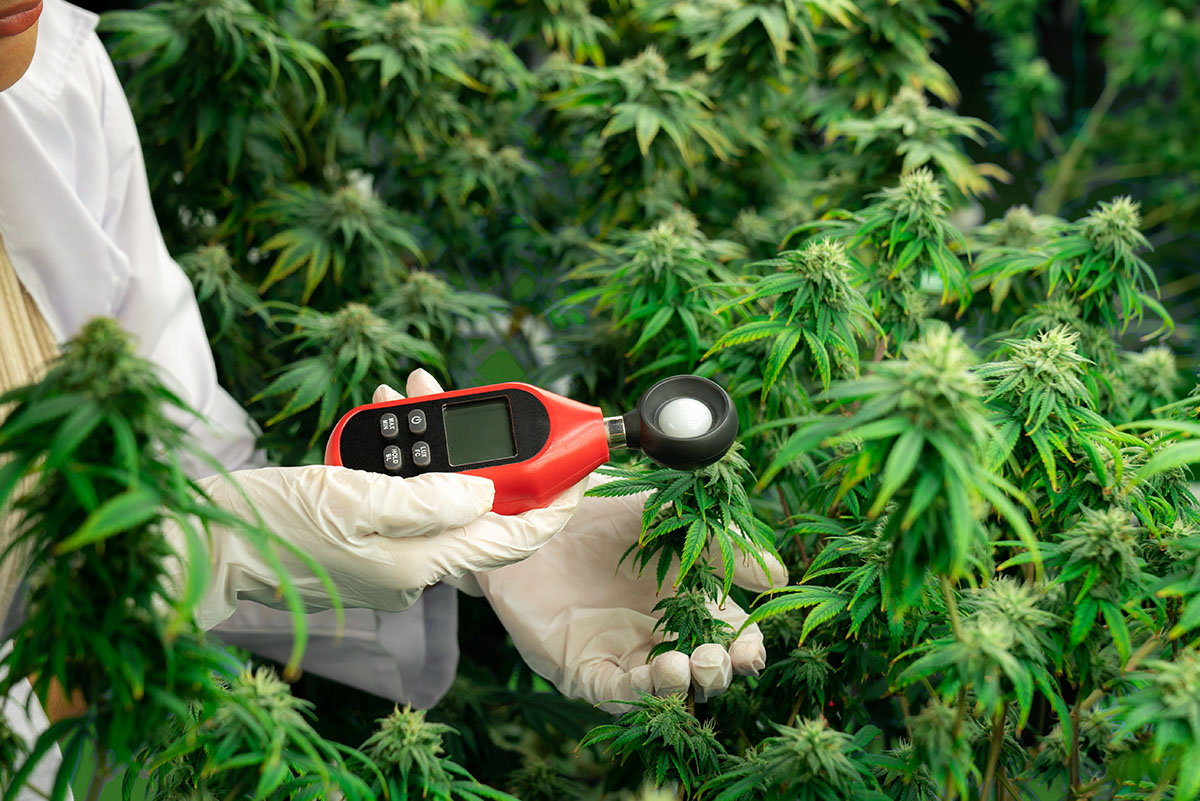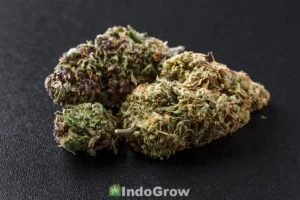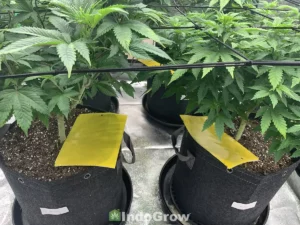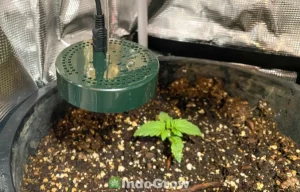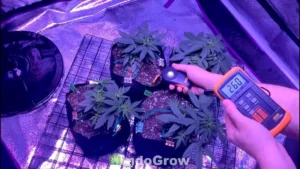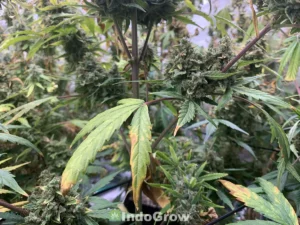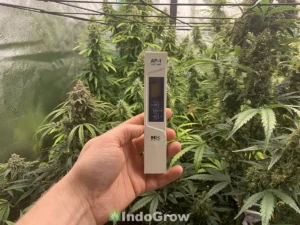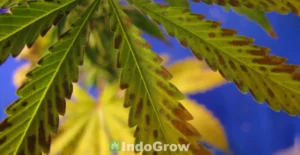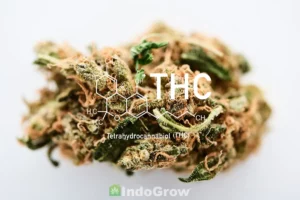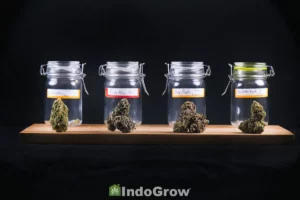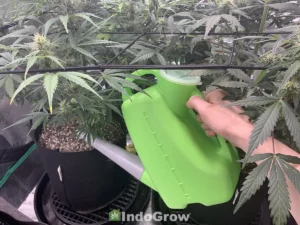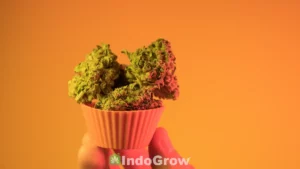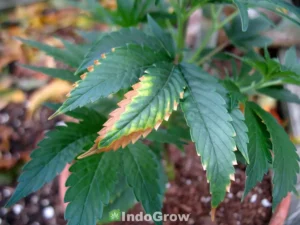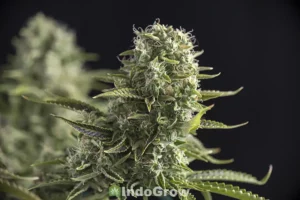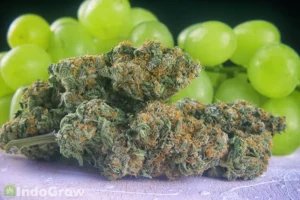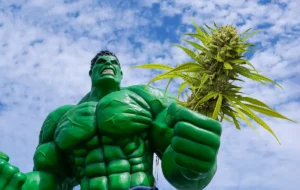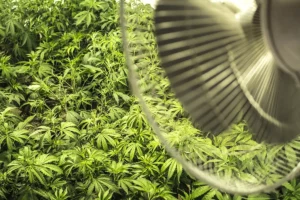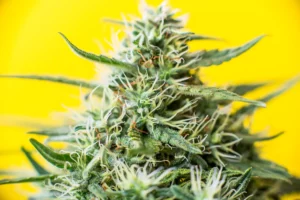When growing cannabis, keeping your plants at the best temperature for weed is essential to their growth and vitality. Plants kept outside their ideal temperature range can experience a variety of negative effects including fungal or pest infections, slowed or stunted growth, and more. In contrast, plants kept at ideal temperatures will be fast growing and more disease resistant, and they will produce higher quality buds at harvest time.
This article will discuss the ideal temperatures for growing weed at every life stage, as well as ideal temperatures for everything that comes after, including drying, curing, storing, decarboxylating, and vaping your weed. It will also offer tips on adjusting your temperature to bring it into the ideal range.
Table of Contents
- Why Temperature is Important for Cannabis
- Relationship Between Temperature and Humidity
- How to Increase Temperature in a Grow Tent
- How to Decrease Temperature in a Grow Tent
- Best Temperature for Growing Weed
- Best Temperature for Germinating Cannabis Seeds
- Best Temperature for Cannabis Seedlings
- Best Temperature for Weed Vegetative Stage
- Best Temperature for Weed Flowering Stage
- Best Temperature for Drying Weed
- Best Temperature for Curing Weed
- Best Temperature for Storing Weed
- Best Temperature to Decarboxylate Weed
- Best Temperature for Vaping Weed
- Summary
Why Temperature is Important for Cannabis
Similar to people, cannabis plants have a range of comfortable temperatures from the upper 60s to the low 80s. Plants kept inside this comfort zone will grow faster and be more resistant to disease, while plants kept at temperature extremes will grow slowly and experience health issues.
Plants subjected to temperatures below 60F will have dramatically slowed growth and begin to wilt. Exposure to a single night of freezing temperatures will likely kill the plant.
While plants rarely die from heat exposure alone, temperatures above 85F can be dangerous to your plants as well. Photosynthesis will decrease in extreme heat, and the plant will lose water quickly, causing its leaves to become shriveled or cupped. Prolonged heat exposure can burn the plant and lead to root rot when coupled with high humidity.
Relationship Between Temperature and Humidity
Temperature and humidity are two closely related parameters when it comes to growing weed. Relative humidity is an expression of the amount of water vapor in the air as a percentage of total possible water the air can hold at a given temperature. Since warmer air can hold more moisture than cooler air, 60% humidity at 80F will feel much wetter than 60% humidity at 60F.
If temperatures drop suddenly, your grow tent may reach the dew point. When air rapidly cools, the relative humidity may reach 100% or higher. This means that the air cannot hold any more moisture, and water droplets will begin to form on your plants and equipment.
While a temperature drop of a few degrees at night is healthy for plants, a dramatic drop that causes dew to form is unhealthy and can increase risk of bud rot or other fungal infections.
On the other hand, swings from cool to hot can also damage plants by causing the humidity to rapidly fall. Humidity levels below 40% outside of the late flowering stage are unhealthy and can lead to slowed growth, cupping leaves, and burns on the upper canopy.
How to Increase Temperature in a Grow Tent
If your tent is regularly falling below 70F, you may need to add additional heating. Although most indoor grow tents have more than enough heat, tents set up in garages, unfinished basements, or sheds may get uncomfortably cold for your plants.
If you are using low heat bulbs, switching to hotter bulbs may solve this problem. When adding stronger bulbs, place your hand above the canopy for a few seconds. If your hand feels uncomfortably hot, move the bulbs further away from the plant to avoid burning the upper canopy.
Another option is to add a space heater. Heaters should be placed outside the tent, since a full sized space heater can easily overheat a grow tent if it is placed inside. Warm air will be pulled in through the intake vents.
How to Decrease Temperature in a Grow Tent
If your grow tent is both hot and dry, adding a humidifier inside the tent will both add moisture and slightly lower the temperature. If your tent is considerably warmer than the surrounding area, increasing the exhaust fan speed to have more turnovers per minute may solve your problem. Additional oscillating fans can help stabilize the temperature inside the tent by mixing pockets of warm and cool air together, but they will not decrease temperature on their own.
If increasing air flow has not lowered the temperature sufficiently, consider adding an air conditioner. A portable AC unit can be installed just outside the tent to cool the surrounding air. While air conditioners may be more expensive than other interventions, they are the fastest and most reliable way to cool air in your grow tent.
A swamp cooler, or evaporative cooler, is another option to cool your tent. Swamp coolers cool air by passing it over cool water or ice, which pulls heat from the air as it evaporates. Although they cost less to install and operate than an AC unit, they are less efficient at cooling air and need regular maintenance to function.
Best Temperature for Growing Weed
While cannabis can survive in a fairly wide range of temperatures, plants will thrive when kept at 70-85°F (20-30°C). The ideal temperature varies with the plant’s life stage, but as a general rule, if you are uncomfortably hot or cold, your plants are too.
Below, the article will discuss the best temperature for weed from germination to harvest, as well as the best temperatures to dry, cure, store, decarboxylate, and vape your harvest.
Best Temperature for Germinating Cannabis Seeds
Germinating seeds should be kept between 75 and 80 degrees, with 78 being ideal. Temperatures below 70 or above 80 may cause the seed to germinate slowly or not at all. To keep temperatures in range, many growers will place a heat mat under their germination tray.
Equally important to proper germination is humidity. Along with moderate warmth, the seeds will need very high humidity to germinate, around 80-95%. This can be accomplished by wrapping the seeds in moist paper towels or placing them in moist, sterile soil. A clear plastic dome can be used to trap humidity around the seeds.
Once the seed develops its first root and set of false leaves, you can move on to the seedling guidelines. This will typically happen within 3-10 days of starting germination. If your seed is failing to germinate, it may be too cold or too dry.
Best Temperature for Cannabis Seedlings
Similar to germinating seeds, seedlings like moderate, warm temperatures in the upper 70s. You can continue to use a heat mat under the seedlings to keep their growing medium warm. Humidity can be slowly lowered to between 60-70%, with a clear plastic humidity dome still being helpful during this stage.
Seedlings need to stay warm to grow properly, but temperatures over 80 can easily dehydrate the seedlings or burn their delicate leaves. On the other hand, cool, wet environments can cause mold to take over the seedlings and kill them. For these reasons, it is essential to keep your seedlings at a stable temperature between 72-80F.
Best Temperature for Weed Vegetative Stage
During the vegetative stage, the cannabis plant will begin growing rapidly. Its root system will become larger and more robust, allowing the plant to withstand lower humidity and higher temperatures.
Vegetative cannabis plants can be kept at temperatures between 70-85 F. They should ideally be in the upper 70s to lower 80s during the day, with a drop of 5-9 degrees at night. Humidity levels can be anywhere between 40-70%, with 50-60% being ideal.
Similar to other life stages, extreme temperatures are unhealthy for vegetative plants. Temperatures below 60F will significantly slow growth and leave the plant vulnerable to fungal infections like root rot. Temperatures above 90F will slow photosynthesis and may cause cupping, wilting, or heat burns on the leaves.
Best Temperature for Weed Flowering Stage
During the flowering stage, temperatures should be kept slightly cooler – between 70-78 F during the day, with a drop of about 5 degrees at night. Humidity should also drop during this period by about 5% a week until the humidity reaches 30-40% in the late flowering stage.
Keeping temperatures below 80F during the flowering stage is essential to producing dense, potent buds. High temperatures can degrade terpenes and cannabinoids in the buds and lead to an inferior product. However, temperatures below 60F can decrease the vitality of the plant and cause sluggish growth or fungal infection.
Best Temperature for Drying Weed
After the flowering stage is finished, weed plants will be cut down, trimmed of their fan leaves, and hung up to dry. During this stage, air temperatures between 65-75 F are ideal, with humidity levels of 55-65%.
Do not attempt to dry cannabis faster by keeping it in hot temperatures. Temps above 80F will degrade the buds and make them less flavorful and potent. A slower drying product will also leave the buds firmer and less crumbly.
Too cool of drying conditions can also be problematic. Drying below 60 F will be too slow and increases the risk of bud rot developing.
Best Temperature for Curing Weed
Once the buds snap off the stem easily, they can be moved to sealed glass jars for curing. Similar to drying weed, the jars should be kept at room temperature, between 65-75 F with humidity between 55-65%. Jars must be shaken and burped each day to keep the weed curing properly. Humidity and temperature can be checked at this time to ensure ideal curing conditions.
Best Temperature for Storing Weed
Once curing is finished, usually after 2-4 weeks, the weed is ready for longer term storage. Continue to store the weed in a sealed glass jar at room temperature in a location protected from direct sunlight or drafts. Humidity packs can be left in the jar to keep the weed fresh. Properly stored weed should retain its potency for up to 2 years.
Best Temperature to Decarboxylate Weed
The ideal conditions for decarboxylating weed will occur between 230-250 F. For the best decarboxylation, preheat your oven to 250F and space your dried and cured buds out on a tray lined with parchment paper. After 25-30 minutes, they should be finished and ready to be used in cannabutter, oil, or other products.
Consider checking your oven temperature with a thermometer before putting your buds in. Temps below 200 F will not activate the THC in your bud, while temps above 300F will destroy the THC entirely along with most other compounds in the weed.
Best Temperature for Vaping Weed
The ideal temperature for vaping weed varies slightly depending on the effects you desire, but temperatures below 325 or above 450 are not recommended.
For a milder high and less harsh smoke, vape between 325-350 F. Temperatures between 350-400 F will give you a good balance of flavor and intoxication with slightly harsher smoke. Many people choose to vape their herb in this range
Temperatures between 400-430 F will give you the most intense high, although the smoke will be less flavorful as many terpenes are burnt off at this temperature. Additionally, vaping at higher temperatures will increase the risk of side effects like coughing or a sore throat. This temperature feels the most similar in effect to smoking.
Summary
During germination and the seedling stage, the best temperature for weed plants is between 75-80 F with accompanying high humidity. Temperatures should remain stable, and heating pads are often used during this stage to keep the growing medium warm.
Once your plants enter the vegetative stage, they can handle hotter temperatures between 75-85, with a dip in temperature of 5-9 degrees at night when their lights go off. They can tolerate a wide range of humidity conditions from 40-70%.
During the flowering stage, more temperate conditions between 70-80 F are ideal with a drop of around 5 degrees at night. Temperatures above 80 F in the late flowering stage can decrease the potency and flavor of your buds, so careful monitoring of the temperature is very important at this life stage. Humidity should also drop slowly during this period until it reaches 30-40% in the late flowering stage.
After harvest, temperatures between 65-75 and humidity between 55-65% are recommended for drying, curing, and storing your weed.
To learn more, check out How to Grow Weed Step by Step.

Rocky Horton
Author
Rocky Horton is an experienced cannabis grower and the founder of IndoGrow. The IndoGrow editorial team has over four decades of combined growing experience. Learn more.

